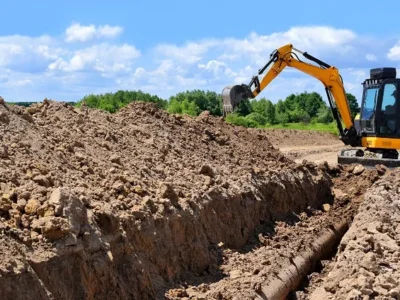In today’s fast-paced and ever-evolving world, the safety and security of our homes, businesses, and public spaces have never been more critical. With the advent of new technologies and the increasing sophistication of threats, the demand for advanced fire and security systems has skyrocketed. These systems are not just about responding to incidents; they are about preventing them, ensuring a proactive approach to protection. This comprehensive guide delves into the cutting-edge solutions that are setting new standards in safety and security, offering peace of mind by safeguarding lives, assets, and investments.
The Critical Importance of Advanced Fire and Security Systems
At the core of modern safety measures, advanced fire and security systems play an indispensable role. They serve as the first line of defence against potential threats, including fires, burglaries, vandalism, and other emergencies. By integrating the latest technologies, these systems provide unparalleled protection, ensuring that individuals, businesses, and communities can thrive without the looming shadow of potential disasters.
Technological Innovations in Fire Detection and Suppression
The latest advancements in fire detection and suppression technologies are revolutionising how we protect against fire hazards. Smart smoke detectors, heat sensors, and fire alarm systems offer rapid detection, often identifying potential issues before they escalate into major fires. Moreover, automatic suppression systems, such as water mist and gas-based extinguishers, can contain or extinguish fires quickly, minimising damage and potentially saving lives.
Enhanced Security Through Advanced Surveillance and Monitoring
Surveillance and monitoring have undergone significant transformations, thanks to advancements in camera technology and analytics. High-definition cameras, coupled with AI-driven image and motion analysis, provide real-time surveillance capabilities, enhancing security personnel’s ability to monitor and respond to incidents. Facial recognition technology and automatic number plate recognition further augment these systems, adding layers of security that were once the realm of science fiction.
Access Control: The Next Generation
Modern access control systems have moved beyond traditional locks and keys, incorporating biometrics, electronic tags, and smartphone apps to control entry. These systems offer a higher level of security, allowing for detailed tracking of who enters and exits a building, and at what time. Additionally, they can be integrated with other security systems, creating a comprehensive safety ecosystem that protects against unauthorised access and potential intrusions.
The Role of IoT and Connectivity in Security
The Internet of Things (IoT) has played a pivotal role in enhancing the capabilities of fire and security systems. Connected devices can communicate with each other, providing a cohesive and coordinated response to emergencies. For instance, a detected breach by an access control system can trigger an immediate lockdown protocol, while simultaneously alerting surveillance teams and local authorities. This interconnectedness ensures a swift and efficient reaction to threats, significantly reducing the potential for harm.
Implementing Advanced Fire and Security Systems
The implementation of these systems requires careful planning and consideration. It’s not just about installing hardware; it’s about creating a tailored solution that addresses specific risks and vulnerabilities. This process involves assessing the premises, identifying potential threats, and designing a system that integrates various components into a seamless security network.
Customisation and Integration
Each property has unique security needs, influenced by its layout, location, and the nature of its occupants or operations. Customisation is key to ensuring that fire and security systems provide effective protection. Furthermore, integrating fire alarms, surveillance cameras, access controls, and emergency communication systems into a single, manageable platform enhances their effectiveness, offering a unified response to incidents.
Challenges and Considerations
While the benefits of advanced fire and security systems are undeniable, their implementation comes with challenges. These include the cost of installation and maintenance, the need for ongoing updates to keep up with technological advancements, and potential privacy concerns associated with surveillance technologies. Addressing these challenges requires a balanced approach, weighing the benefits of enhanced security against the costs and ethical considerations.
The Future of Fire and Security Systems
The future of fire and security systems lies in further technological innovation and integration. We can expect to see even smarter systems, powered by AI and machine learning, capable of predicting and preventing incidents before they occur. Developments in drone technology and robotics may also play a role, providing additional layers of surveillance and response capabilities.
Conclusion
In an age where threats can arise unexpectedly and escalate rapidly, the importance of advanced fire and security systems cannot be overstated. These systems represent the pinnacle of protection technology, offering proactive and comprehensive solutions to safeguard what matters most. By embracing innovation and integrating these advanced systems into our safety strategies, we can ensure a more secure future for everyone. Whether it’s protecting homes, businesses, or public spaces, the next generation of fire and security systems stands ready to defend against the unknown, providing peace of mind in an uncertain world.













Comments